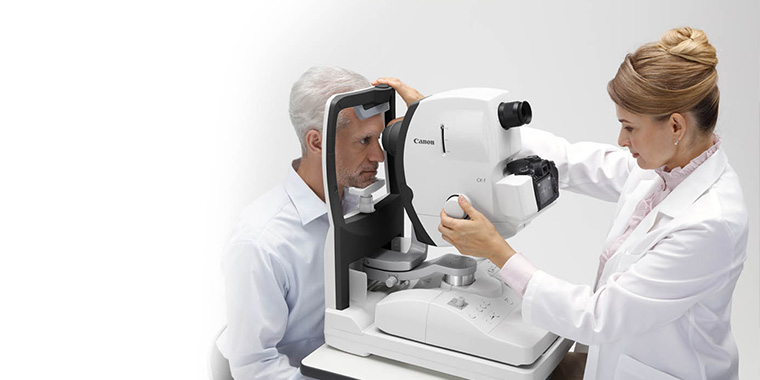Andalusia Eye Doctors: Expert Ophthalmologists in Your Area
Andalusia Eye Doctors: Expert Ophthalmologists in Your Area
Blog Article
The Advantages And Disadvantages of Different Refractive Surgeries for Boosted Eyecare

LASIK Surgical Treatment
LASIK surgery is a generally executed refractive treatment that aims to fix vision problems such as nearsightedness, farsightedness, and astigmatism. This medical technique has gained appeal as a result of its performance in supplying people with clearer vision and decreasing their reliance on glasses or contact lenses. Throughout the treatment, a slim flap is developed on the cornea, and a laser is used to improve the underlying tissue, correcting the refractive error. The flap is then rearranged, permitting quick recovery and minimal pain for the client.
One of the main advantages of LASIK surgical procedure is the rapid improvement in vision experienced by lots of clients. It is essential for individuals thinking about LASIK surgical procedure to undergo a comprehensive analysis by an eye care expert to determine if they are ideal candidates for the procedure.
PRK Treatment
The PRK treatment, likewise called Photorefractive Keratectomy, is a kind of refractive surgery that aims to correct vision issues similar to LASIK surgical procedure. Unlike LASIK, which entails developing a flap in the cornea, PRK works with the surface area layer of the cornea. Throughout the PRK procedure, the outer layer of the cornea, called the epithelium, is gotten rid of to allow improving of the underlying corneal cells with an excimer laser. This reshaping aids to deal with refractive errors such as nearsightedness, farsightedness, and astigmatism.
One of the benefits of PRK over LASIK is that it removes the threat of flap-related issues because no flap is developed during the surgery. This can be helpful for individuals with thin corneas or those associated with contact sports where eye trauma is a possibility. The recovery time for PRK is generally much longer contrasted to LASIK, as the external layer of the cornea requires time to regrow after the procedure. In spite of the longer recovery period, PRK can be a suitable choice for people looking for vision improvement surgery.
SMILE Surgery
An innovative refractive surgery strategy acquiring popularity in the area of ophthalmology is SMILE Surgical treatment. Small Laceration Lenticule Extraction (SMILE) is a minimally invasive treatment that remedies vision by reshaping the cornea making use of a femtosecond laser. Unlike conventional LASIK surgical procedure, SMILE Surgery involves creating a little my response cut in the cornea to extract a lenticule, which results in less disturbance to the corneal framework and potentially quicker recovery times.
One of the primary benefits of SMILE Surgical treatment is its capacity to treat nearsightedness (nearsightedness) and astigmatism with high precision, bring about outstanding visual outcomes for individuals. The minimally intrusive nature of the treatment also reduces the risk of issues such as dry eye syndrome, making it a favorable alternative for individuals looking for refractive surgical treatment.

LASEK Strategy
Having checked out the advantages and considerations of SMILE Surgery, one more significant refractive surgical treatment strategy worth checking out is the LASEK Strategy. LASEK, which means Laser-Assisted Subepithelial Keratectomy, is a type of laser eye surgical treatment that intends to fix refractive site link errors such as nearsightedness (nearsightedness), hyperopia (farsightedness), and astigmatism.
Unlike LASIK, LASEK does not include creating a corneal flap. Instead, during a LASEK treatment, the cosmetic surgeon uses a diluted alcohol option to loosen the thin external layer of the cornea, understood as the epithelium. This layer is after that gently relocated aside to enable the laser to reshape the underlying corneal tissue. When the cornea has actually been reshaped to the wanted level, the epithelial layer is rearranged.
Among the key advantages of LASEK is that it can be suitable for people with slim corneas that may not be good prospects for LASIK. Additionally, LASEK normally leads to minimal post-operative pain and a quicker healing time contrasted to PRK. Nevertheless, the aesthetic recuperation process with LASEK may be slightly longer than with LASIK.
Implantable Call Lenses
Implantable Get in touch with Lenses offer a long-lasting vision adjustment option for individuals looking for an option to standard get in touch with lenses or glasses. These lenses, likewise known as phakic intraocular lenses, are operatively inserted into the eye to remedy refractive mistakes such as myopia (nearsightedness), hyperopia (farsightedness), and astigmatism. neurologist Andalusia. Unlike conventional contact lenses that rest on the surface of the eye, implantable get in touch with lenses function within the eye itself, providing clear vision without the demand for day-to-day maintenance or removal
One of the crucial advantages of implantable get in touch with lenses is their durability. When inserted, they can continue to be in the eye indefinitely, providing regular and secure vision adjustment. Furthermore, these lenses can be a superb alternative for individuals who are bad prospects for laser eye surgical procedure or who like a reversible vision modification procedure.
However, implantable get in touch with lenses do bring some dangers, consisting of the possibility for cataracts or boosted eye pressure. It is vital for people considering this choice to speak with an eye treatment specialist to Read Full Report determine if implantable contact lenses are the best selection for their certain needs and eye wellness.
Verdict
To conclude, each sort of refractive surgical treatment has its own advantages and negative aspects. LASIK surgical treatment is prominent for its quick recovery time, while PRK procedure might be appropriate for patients with thin corneas. SMILE surgical procedure provides minimal pain throughout the procedure, however LASEK strategy may have a longer healing process. Implantable call lenses offer an alternative for those that are not suitable candidates for conventional surgical treatments. Patients must speak with their eye treatment copyright to determine the most effective option for their private demands.

In General, SMILE Surgical treatment presents a promising option for individuals looking to enhance their vision via refractive surgical treatment.
Report this page